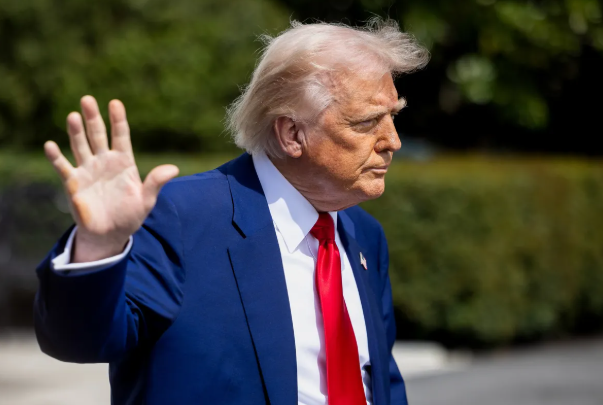US President Donald Trump’s threat to impose an additional 50% import tax on China, while preparing to negotiate with Japan and Israel, has left the market puzzled about the intention behind his comprehensive tariff plan.
On Monday, the stock market fluctuated sharply as Trump posted a series of messages on social media about his talks with trade partners. Market volatility intensified after a false report that the president was willing to consider a complete suspension of tariffs (which the White House denied).
Trump’s implication is that he is willing to use the “carrot” with countries that adopt a conciliatory attitude and the “big stick” with those that vow to retaliate. It remains to be seen whether this will lead to a reduction in the 10% basic tariff he announced last week or a reduction in tariffs for the approximately 60 countries that have been subject to higher tariffs imposed by the president.
Since last week, the US president has been criticizing China’s plan to respond to the 34% tariffs imposed by the US with the same tariffs. On Monday, he further escalated the threat.
Trump posted on social media that “If China does not remove the 34% tariff increase based on its long-term trade infringement by tomorrow, April 8, 2025, the United States will impose a 50% tariff on China starting from April 9.”
According to White House officials, this 50% tariff will be added to the 34% tariff that Trump has imposed on all Chinese imports (set to take effect on Wednesday), as well as the 20% tariff he previously imposed on fentanyl trafficking. This could have a huge impact on the import prices of the United States’ third-largest trading partner.

The Chinese embassy in Washington did not immediately respond to a request for comment. According to a statement released by China’s Ministry of Commerce on Tuesday, Beijing said that if the US insists on imposing new tariffs, China will “fight to the end”. China also urged the Trump administration to stop making threats and said that disputes should be resolved through dialogue.
Trump’s remarks are the latest sign of his insistence on imposing tariffs on almost all of America’s trading partners. The 10% base tariff took effect on Saturday, and higher tariffs on dozens of trading partners will take effect at 12:01 a.m. Wednesday.
In addition, the White House has threatened to veto a bipartisan bill in the Senate that would limit the president’s power to impose tariffs.
In a letter to lawmakers, the White House said, “If this bill is passed, it will seriously impede the president’s power and responsibility to formulate foreign policy and protect national security.” Axios was the first to report this threat.
However, the expected sell-off seems to have been held back by two factors: a growing belief that the Federal Reserve might step in to lower interest rates, and signals from the White House that, despite some aides insisting there is no room for negotiation on the tariff issue, Trump himself will be involved in the deal.
U.S. stocks reversed a 4% decline and rose more than 3% in response to news about Trump’s tariff plan, then fell again and narrowed their losses.
The White House posted on social media: “The message is simple: For those who are ready to sit at the negotiating table and recognize that they will no longer be able to abuse the United States, join us. For those who want to retaliate after exploiting this country for years, we will not yield and will not give in.”
But the aides gave conflicting guidance as they tried to set the president’s course on Monday.
Peter Navarro, a White House adviser and one of President Trump’s most protectionist allies, wrote in the Financial Times that the president’s team “wants to hear from countries including Cambodia, Mexico and Vietnam” that they will stop allowing Chinese goods to be shipped through their territory to the United States, but “this is not a negotiation”.
In a statement on Monday, Stephen Millett, chair of the Council of Economic Advisers, defended the tariffs, saying they were a form of “burden-sharing” for other countries that benefit from U.S. economic and military aid. “This is not only a matter of fairness but also of feasibility,” he said.